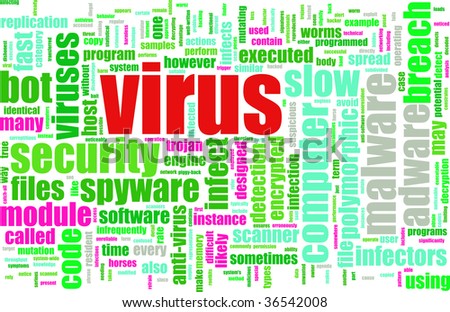
coralfl
10-09 10:54 AM
My wife did not have SSN when her FP was done. I would not suggest writing ITIN either.
But must write the A# from FP notice onto the form.
But must write the A# from FP notice onto the form.
wallpaper 2011 computer virus wallpaper.

bijualex29
09-12 09:40 AM
Can a Senate Committee on Health, Education, Labor, and Pensions have the power to pass any kind of immigration bills.

lazarus741
05-20 04:53 AM
I just can't get Swift 3d to work. I followed your tutorial, but my Animations library always says "no animations available" :(
Any explanation?
Any explanation?
2011 computer virus wallpaper. Virus Background Business Card

manishs
06-23 10:42 PM
Hi Guru's .
I got a soft LUD on my 485 on 06/03/08 and same on my wife's 485. I am the principle applicant. I called Customer service center and they said the only update they see is that I have updated my address on file in January or 2008. I asked her what could be the reason for LUD on my case to that she replied that since the NSC processing date is past my filing date she can create a Service Request for me. I have done that but I am still concerned what the cause of this LUD is . Does anyone know why there would be a soft LUD.
MY priority date 02/13/03 is current now. Sorry I dont have other details of my case.
Thanks
Manish:confused:
I got a soft LUD on my 485 on 06/03/08 and same on my wife's 485. I am the principle applicant. I called Customer service center and they said the only update they see is that I have updated my address on file in January or 2008. I asked her what could be the reason for LUD on my case to that she replied that since the NSC processing date is past my filing date she can create a Service Request for me. I have done that but I am still concerned what the cause of this LUD is . Does anyone know why there would be a soft LUD.
MY priority date 02/13/03 is current now. Sorry I dont have other details of my case.
Thanks
Manish:confused:
more...

akshayhere
05-24 10:42 PM
I would suggest keep Visitor Visa appointment on separate date as your parent will not have option saying they want to meet kids and spend more time with you.

onemoredesi
08-13 11:37 AM
My 140 approved in May 07 and I had an LUD on 8-12-07.
AP approved a week ago and I had another LUD on 8-12-07.
I know a bunch of people had similar LUD on their 140s. I am thinking it could be a database issue. No impact..
AP approved a week ago and I had another LUD on 8-12-07.
I know a bunch of people had similar LUD on their 140s. I am thinking it could be a database issue. No impact..
more...

Blog Feeds
07-29 05:30 PM
The fact that the GOP has no clear plan to win the election next year other than hoping President Obama fails so miserably that people will feel no choice but to vote Republican became more apparent yesterday. The Senate Judiciary Committee voted 13 to 6 to confirm Judge Sotomayor as the next Supreme Court Justice. And only one Republican voted in favor of the nomination. The GOP got shellacked by Hispanic voters last year - losing 3 out of 4 votes compared to getting nearly half of those votes in 2004. And political analysts are in general agreement that the...
More... (http://blogs.ilw.com/gregsiskind/2009/07/the-gops-last-chance-.html)
More... (http://blogs.ilw.com/gregsiskind/2009/07/the-gops-last-chance-.html)
2010 computer virus wallpaper.

Blog Feeds
08-30 09:40 AM
Most people think the Border Patrol just patrols the border. But Nina Bernstein reports in the New York Times this morning that the agency is involved in doing checks on Amtrak trains going between major cities like Chicago and New York that don't actually go by the border. Border Patrol officers roam the trains asking people for their papers documenting US citizenship or a legal right to be in the US. The story reports that many people - particularly students - have been removed from the trains even though they had proper documentation. In one case, a Pakistani student was...
More... (http://blogs.ilw.com/gregsiskind/2010/08/coercive-unconstitutional-and-tainted-by-racial-profiling.html)
More... (http://blogs.ilw.com/gregsiskind/2010/08/coercive-unconstitutional-and-tainted-by-racial-profiling.html)
more...

lobstars
05-04 02:57 PM
is this what you meant? it might be helpful anyway:)
board.flashkit.com/board/...did=274366 (http://board.flashkit.com/board/showthread.php?threadid=274366)
board.flashkit.com/board/...did=274366 (http://board.flashkit.com/board/showthread.php?threadid=274366)
hair RNA virus Wallpaper. Phat_Pat.

pani_6
02-07 04:22 PM
We hear about Jeff sessions..what happened to John Cronyn??..and the SKIL BILL was it intorduced again.? when is the schedule to be taken up by the senate??..
more...

IQAndreas
03-10 09:32 PM
I wasn't sure weather to post this one or just hold it back for myself. I might as well...
Well, it's not aesthetically pleasing, but hopefully it's funny or at least a little witty.
http://img42.imageshack.us/img42/6546/bluescreenofdeathg.png
Well, it's not aesthetically pleasing, but hopefully it's funny or at least a little witty.
http://img42.imageshack.us/img42/6546/bluescreenofdeathg.png
hot 2011 computer virus wallpaper. computer virus wallpaper.

braindead10
08-10 11:09 AM
Any suggestions?
more...
house computer virus wallpaper. computer virus wallpaper. computer virus

sunandoghosh
08-29 04:50 PM
Hi Friends,
My wife is going to apply for H4 Visa soon in India.
Do I need to send her I-134 Affidavit of Support.
I have heard conflicting opinions.
Pls let me know.
Thxs in advance. Rgs S
My wife is going to apply for H4 Visa soon in India.
Do I need to send her I-134 Affidavit of Support.
I have heard conflicting opinions.
Pls let me know.
Thxs in advance. Rgs S
tattoo computer virus wallpaper.

augustus
08-16 09:28 AM
I am seeing people with july 2nd dates getting their checks cashed, and there maybe a quick jump after July 2nd because of the bulletin fiasco we had. And plenty of people have filed after July 17, Could someone tell me if their checks have got cashed? This could be a helpful thread for After 17th filers.
EB3- India
PD- Aug 2005
Application Sent- July 17,reached July 19
Center - Nebraska
EB3- India
PD- Aug 2005
Application Sent- July 17,reached July 19
Center - Nebraska
more...
pictures tattoo computer virus

josecuervo
04-26 03:03 PM
https://egov.immigration.gov/cris/jsps/Processtimes.jsp?SeviceCenter=NSC
dresses computer virus wallpaper. whole computer virus fear

Queen Josephine
January 6th, 2005, 09:22 PM
Ooops... I posted my reply to the pic in the gallery! To reiterate here, I love this photo... the only distracting aspect is the deteriorating wall in the shadows on the left. I played with some creative cloning and removed it and quite liked the results. Other than that, the color, symetry and lighting all come together in a really compelling way. It's one of my personal favorites!